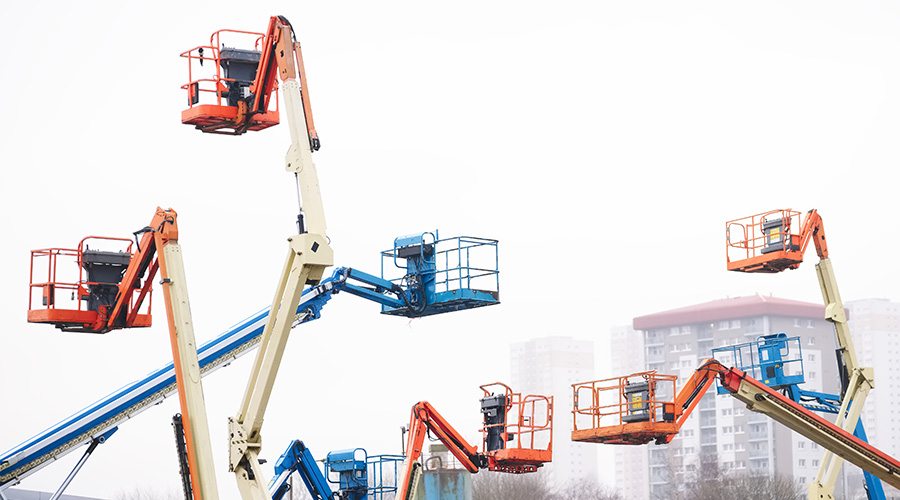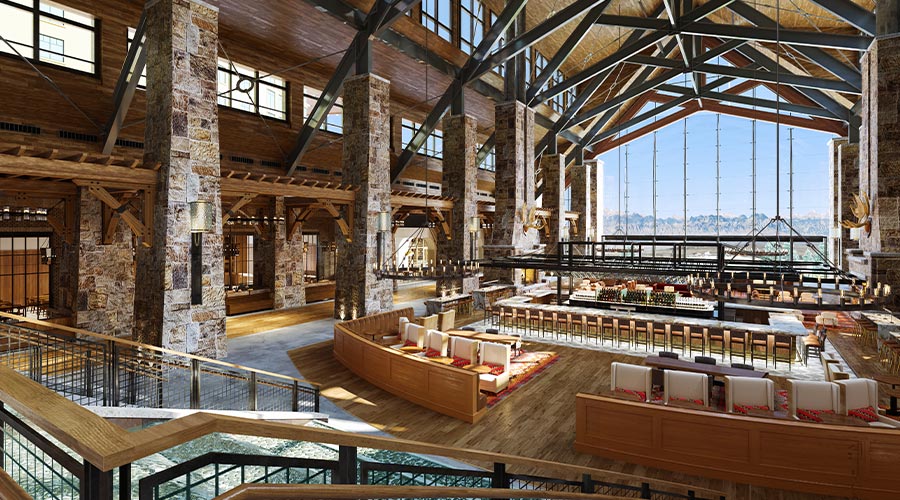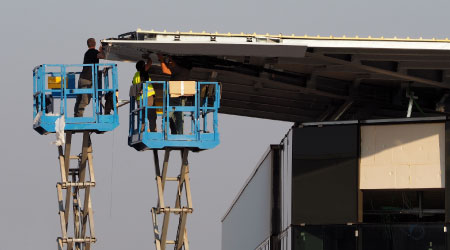Six Factors To Consider When Specifying Aerial Lifts
Managers can apply several general guidelines when specifying lift equipment. Telehandlers generally offer the greatest load capacity. Scissor lifts typically offer the most work-platform space. Telescope and boom lifts usually have the greatest ranges of elevation. Articulated boom lifts generally offer the greatest reach flexibility.
In deciding which lift to select, managers need to consider six factors:
- inside vs. outside tasks
- transport clearances to the job, including doorways
- surface conditions, including whether the surface is paved or unpaved, whether the terrain is level or sloped or even or rough, and if obstacles are present
- elevation and reach to the work site
- personnel, tools, utilities — compressed air and electricity — and accessories for the job
- storage space for the lift.
A job might require traveling on level indoor surfaces through a standard personnel door and reaching a lighting task on a 30-foot high fixture over a gymnasium floor.
One solution for this task is to use a hard-tired scissor lift with a small enough lowered profile to get through the door. A 6-foot-tall worker using a lift platform with a height of 24 feet can reach a light fixture 30 feet above the ground. Generally, a 30-inch by 64-inch work platform provides enough space for the worker, materials, and tools.
Also, an accessory for the lighting task might be a lamp holder on the work platform that provides a place for safely storing the new lamp while the lift moves into position, as well as storing the old lamp while returning it for disposal. The holder on the work platform prevents damage to the fragile lamps, and it saves time because the lamps arrive at the same time as the technicians, eliminating the need to hoist materials to the work area. The holder also provides an out-of-the-way place to store the old lamp until the technician completes the job.
Managers need to make sure the lift storage area will accommodate the stowed dimensions of the lift. If the scissor lift is 30 inches wide and 64 inches long and has a stowed height of 72 inches, the storage area needed would be about 3 feet wide by 6 feet deep by 7 feet high, allowing for clearances.
Related Topics:















